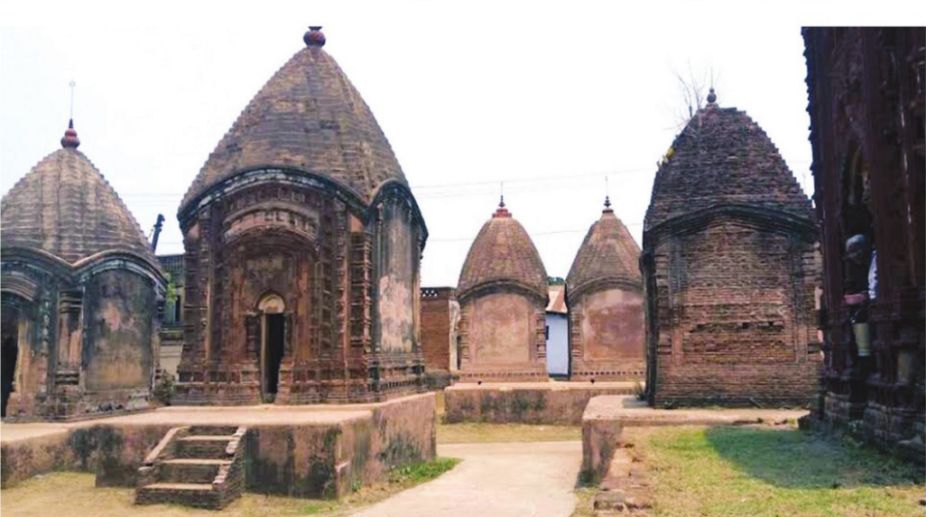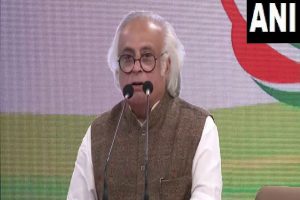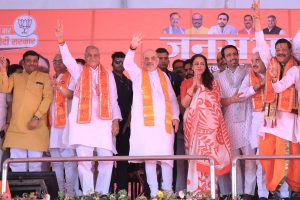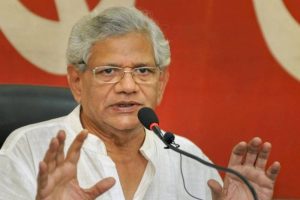For over the past 50 years, Gopaldas Mukherjee, affectionately known as Botuda, has lived his life with passion. He has never been after materialistic possessions of the world that is often used as a yardstick to judge the stories of success and failure. His story is different. He wanted his small village to acquire international attention and after a long struggle he has been able to achieve his goal.
The octogenarian lives in Maluti, a small village in Jharkhand bordering Bengal in Rampurhat, and is around 230 kilometres from Kolkata.
His village is also known as Guptakashi because of the presence of the 72 exquisite terracotta temples standing within a radius of just 700 metres. Tucked away in an obscure corner off the Dumka-Rampurhat State Highway, Maluti originally had 108 temples but most of them have now crumbled to dust due lack of maintenance.
The small picturesque village surrounded by lush green forests, hillocks and rivulets is situated just 23 kilometres from Tarapith, the revered temple of Goddess Tara where devotees descend in large numbers every day. But a few might be aware that Maluti has the temple of Maulikshya Devi considered to be the elder sister of Goddess Tara.
The temples of Maluti have their own proud history.The village first came into limelight in fifteenth century as the capital of ‘Nankar Raj’ (tax-free kingdom).The credit of turning it into a temple village goes to the Baj Basanta dynasty whose rulers instead of building palaces, competed in constructing temples.
The inscriptions are in a mix of Bengali, Prakrit and Sanskrit, and the engravings are from epics; they depict pastoral life and gods and goddesses. The surviving temples are dedicated to Shiva while the rest are those of Kali, Durga and Vishnu. Interestingly, no particular style of architecture has been followed in Maluti and all popular styles of eastern India are visible there.
It is also believed that the name of the village originally Mallahati, comes from the Malla kings of Bishnupur in Bankura district who ruled this area in the 17th and 18th centuries. But the heritage place was lying in neglect and in a dilapidated condition with Bihar (now Jharkhand) government taking virtually no interest in its maintenance.
Gopaldas Mukherjee retired from the air force as ground engineer in 1967. He says that soon after returning to his village after retirement he began to do a research on the Maluti temples to ascertain the era they belonged. “The government officials had little knowledge about the ancient temples so I had to carefully read the inscriptions to find as to which age they belonged before convincing them that they need restoration,” he says.
He painstakingly contacted several senior IAS officers and even built up a rapport with them. He says that his good relationship with Mr Arun Pathak, former chief secretary of Bihar helped him to catch the government’s attention. Eventually, the Bihar government took over the village and started restoration of the temples in 1983. He added, the village was initially under Bhagalpur division.
Renovation is being done for 62 out of 72 temples as 10 of them are still in good condition. The money sanctioned by the Prime Minister is in equal ratio from the centre and the state government. Upset with the abysmal attitude and general ignorance of this historical legacy, Botudatook on the responsibility of saving the temples after he returned to the village, post retirement from the air force in 1967.
“I always was proud of the fact that I was born in a temple village, but after returning from my service in the air force, I was saddened to see the condition of the temples which were in dire straits. I took a vow to restore them to their original glory and thereby also gain attention for my village,” he says, while sitting at his 135-years-old house, that’s made of mud and straw. The Global Heritage Fund declared it as one of the 12 heritage sites of the world that is fast deteriorating beyond repair.
In 1968 he joined as a headmaster of a village school and also began to work for the renovation of temples. He met several senior administrative officials and urged them to make efforts for the restoration of these temples. His efforts proved fruitful when the Bihar government sanctioned money for it in the early 1980s. But work moved tardily over the years. The retired school headmaster continued to run from pillar to post requesting the government to speed up the work. Villagers too rued that several senior politicians had visited their village and assured them of renovation and turning the place into tourist attraction, but nothing had been done.
“Former Chief Minister Babulal Marandi had visited here and promised to develop the village as a tourist spot, but it remained merely an unfulfilled promise as the condition of the temples turned from bad to worse,” lamented Alok Banerjee, a villager.
Botu da’s prayers were finally answered when Prime Minister Mr Narendra Modi sanctioned a budget of Rs 13 crores for the temple’s repair work as well as developing the general infrastructure of Maluti in 2015.
The village gained nationwide attention after the Jharkhand tableau on Maluti temples was adjudged second best at the Republic Day parade in New Delhi in 2015. It was a momentous event for a state that had made it to Rajpath only on four previous occasions but was never feted.
“The victory proved to be a turning point for us. The village instantly found countrywide attention. The state government was very happy over the achievement and requested the PMO to take steps for the restoration of the temples. The Union government also responded positively,” he says with pride. Soon after, Jharkhand Chief Minister Raghubar Das honoured Gopaldas Mukherjee in Dumka, the district headquarters.
However, the 87-year-old was upset when work was stalled due to a financial deadlock in 2016. “I was extremely unhappy when the work got stalled last year. It raised my concerns as all I wanted to see was the restored Maluti temples before I left this world for good,” he said, turning emotional.
The work eventually began early this year and has been continuing since then. Now Botuda is a happy man. As the sun gently slips behind the hillocks in the horizon and silence envelops the sky as birds fly to their nests, a silent prayer is sent to the heavens above for Botuda so that he can finally see the priceless treasures of history in his village shine brightly again.











